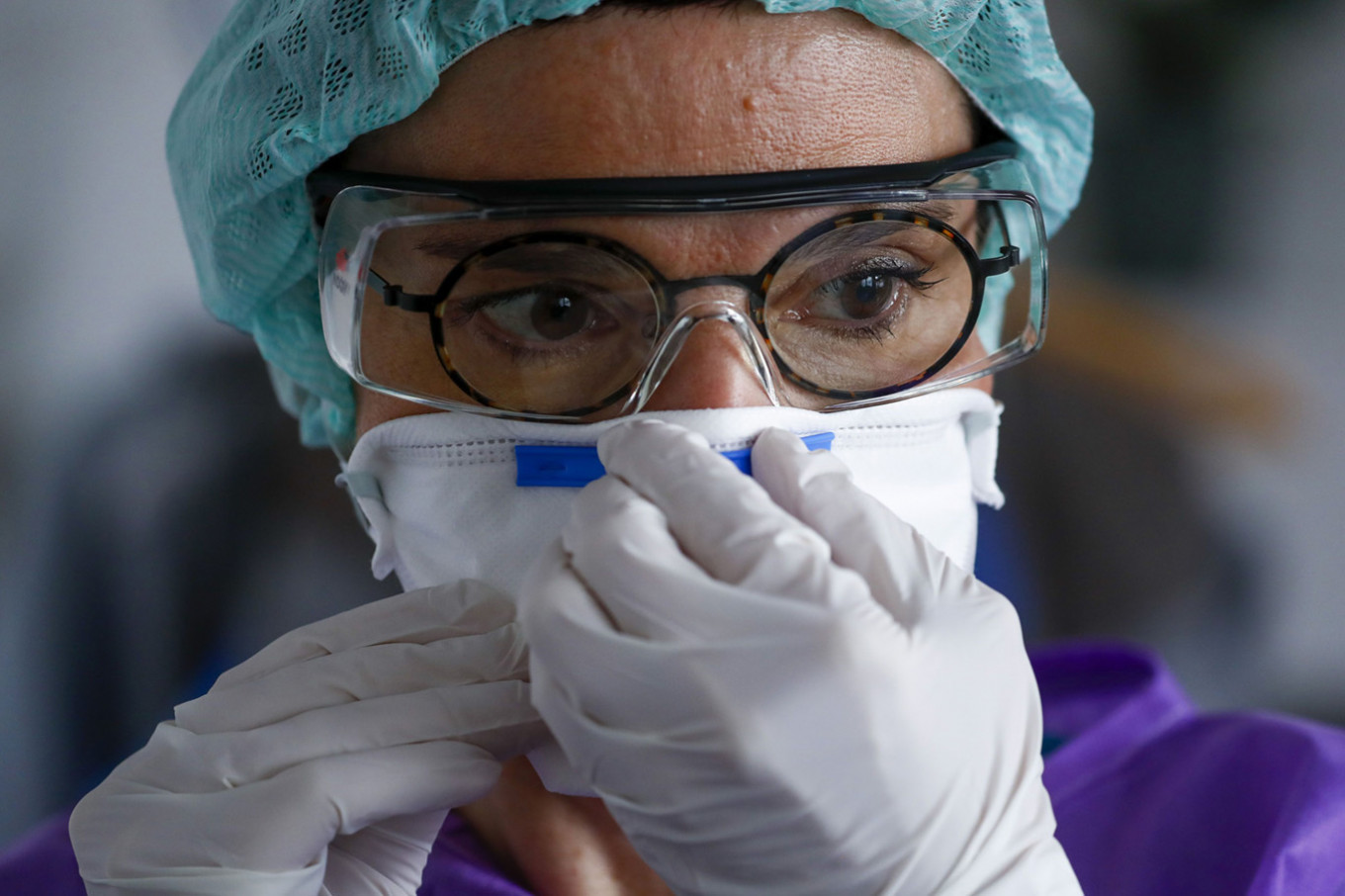Popular Reads
Top Results
Can't find what you're looking for?
View all search resultsPopular Reads
Top Results
Can't find what you're looking for?
View all search resultsCoronavirus cases without symptoms spur call for wider tests
Change text size
Gift Premium Articles
to Anyone
S
cientists are calling for urgent studies to determine the proportion of people with coronavirus who show no, or delayed, symptoms amid concern that the number of silent carriers may be greater than previously thought.
Iceland, which says it’s tested a higher proportion of inhabitants than any other country, found that about half those who tested positive have no symptoms of Covid-19, Thorolfur Gudnason, the nation’s chief epidemiologist, told BuzzFeed News. As many as a third of the people who test positive show delayed symptoms or none at all, the South China Morning Post reported Sunday, citing classified data from the Chinese government.
The high rate of asymptomatic cases can complicate efforts to stop the spread of the disease because many countries aren’t testing people unless they’re seriously ill. A report by a joint WHO-China mission last month described such infections as “relatively rare” and not appearing to be major drivers of transmission.
“It’s becoming clearer that spread of Covid-19 by people who are asymptomatic or mildly symptomatic may be responsible for more transmission than previously thought; making control of the virus more difficult,” Scott Gottlieb, the former head of the US Food and Drug Administration, said in a Twitter post earlier this month.
The first strategy revolves around a massive rollout of testing capacity. We believe that a significant proportion of epidemic transmission is due to mild and maybe even asymptomatic infections (https://t.co/VuWXqrjPpx). 10/19
— Trevor Bedford (@trvrb) March 19, 2020
In South Korea, more than 20% of asymptomatic cases reported to the Korea Centers for Disease Control and Prevention didn’t develop symptoms during hospitalization. That may reflect the extensive testing the country has conducted, Jeong Eun-Kyeong, director of South Korea’s CDC, told reporters on March 16.
Multiple research papers have indicated the potential for the coronavirus to spread among people before they display the typical fever, cough and fatigue associated with the Covid-19 lung disease.
Read also: How to clean your house to prevent the spread of coronavirus and other infections
Viral load
The highest concentrations, or viral loads, detected in patients -- particularly in their noses -- occurred soon after they developed symptoms, doctors in China found in a study of 18 Covid-19 patients closely monitored for weeks.
The study, published Thursday in the New England Journal of Medicine, found the shedding of viral genetic material resembled that of flu patients, but was different from that seen 17 years ago in patients with severe acute respiratory syndrome, or SARS.
One of the 18 patients didn’t develop symptoms, yet the viral load was similar to that of the symptomatic patients, the researchers said, “which suggests the transmission potential of asymptomatic or minimally symptomatic patients.”
The findings square “with reports that transmission may occur early in the course of infection and suggest that case detection and isolation may require strategies different from those required for the control of SARS,” according to the researchers.
Japanese research
Researchers in Japan found that the time it takes for a newly infected person to transmit the infection to another person is roughly 4.6 days -- about a day shorter than the median incubation period.
“This suggests that a substantial proportion of secondary transmission may occur prior to illness onset,” Hiroshi Nishiura and colleagues at Hokkaido University’s Graduate School of Medicine wrote in a paper published in the International Journal of Infectious Diseases.
Some 86 percent of all Covid-19 infections were “undocumented” prior to the Jan. 23 implementation of travel restrictions and other heightened control measures in China, researchers from Columbia University reported in the journal Science last week.
“This high proportion of undocumented infections, many of whom were likely not severely symptomatic, appears to have facilitated the rapid spread of the virus throughout China,” they said. The findings explain the rapid geographic spread of the virus “and indicate containment of this virus will be particularly challenging.”
--With assistance from Phil Serafino and Sohee Kim.











